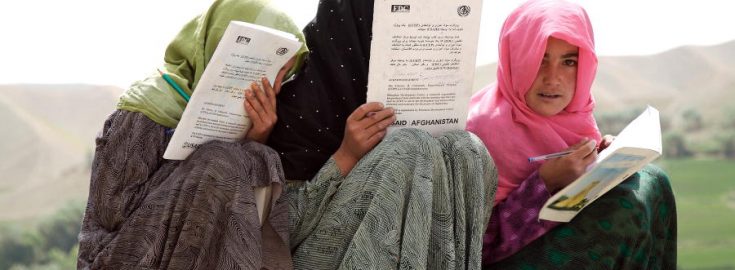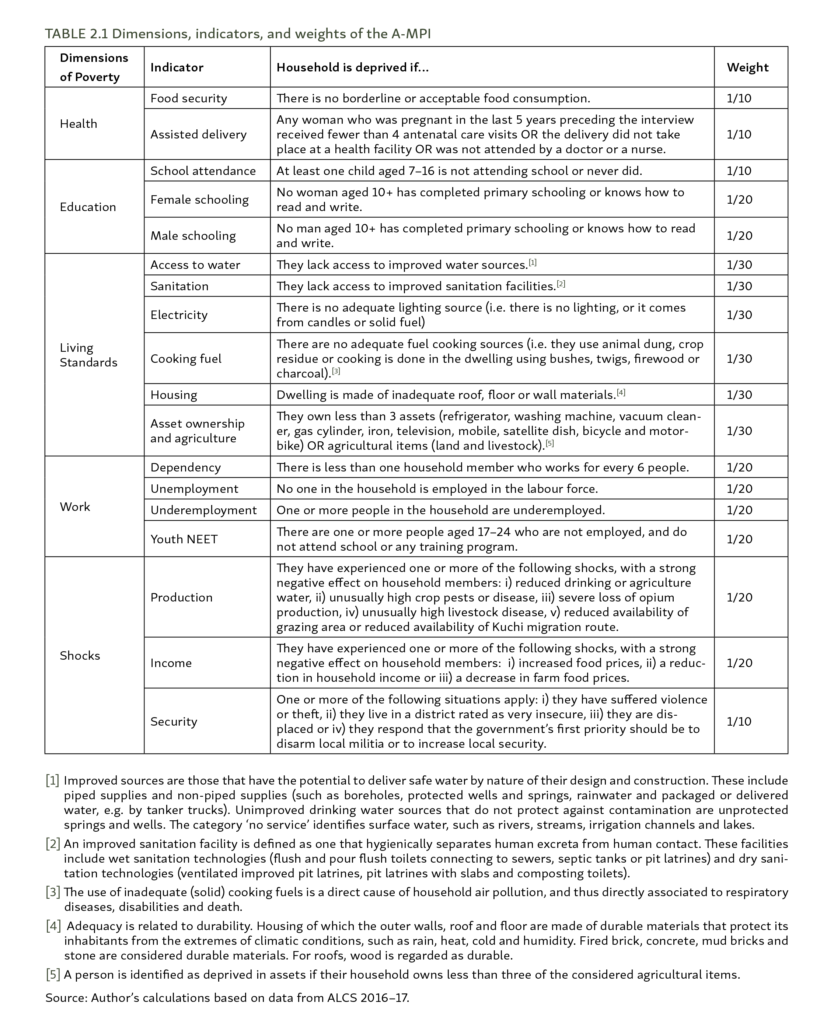
Search
Photo: United Nations
- National MPI Info
- Global MPI 2021 Country Briefing
- Joined MPPN: 2015
- Dimensions Magazine Articles
National MPI Info
Multidimensional Poor (based on National MPI): 51.7% in 2016-2017
Launch date of national MPI: 2019
Institution responsible for national MPI: National Statistics and Information Authority
Dimensions of national MPI: Health, Education, Living Standards, Work and Shocks.
The Islamic Republic of Afghanistan launched its first Afghanistan Multidimensional Poverty Index (A-MPI) on 31 March, 2019. It shows that just over half (51.7 percent ) of people in Afghanistan are multidimensionally poor. The level of multidimensional poverty ranges from a low of 12% in Kabul to a high of 81% in Baghdis.
The A-MPI comprises five dimensions and 18 indicators that were selected in a consultative process with high-level policymakers in the country and technical experts. A person is identified as poor if he or she is deprived in at least 40% or more of the dimensions or weighted indicators.
The Afghanistan Multidimensional Poverty Index (A-MPI), computed by the National Statistics and Information Authority (NSIA) is an official permanent national poverty statistic based on the data from the Afghanistan Living Conditions Survey (ALCS) 2016-2017. The A-MPI is the first national report on multidimensional poverty in Afghanistan and contains data on both monetary and multidimensional poverty for children in Afghanistan, for the first time ever. A-MPI reflects the priorities presented in the Afghanistan National Peace and Development Framework (ANPDF) 2017-2021. A-MPI Report is available here.
Poverty is higher among children that the overall population, and it is highest among the youngest children: more than 56% of children aged 0-17 live in multidimensional poverty, rising to 57% among children aged 0-9. Less than 49% of people aged 18 and above are MPI poor. 58% of people are children. Read more on children multidimensional poverty here.














